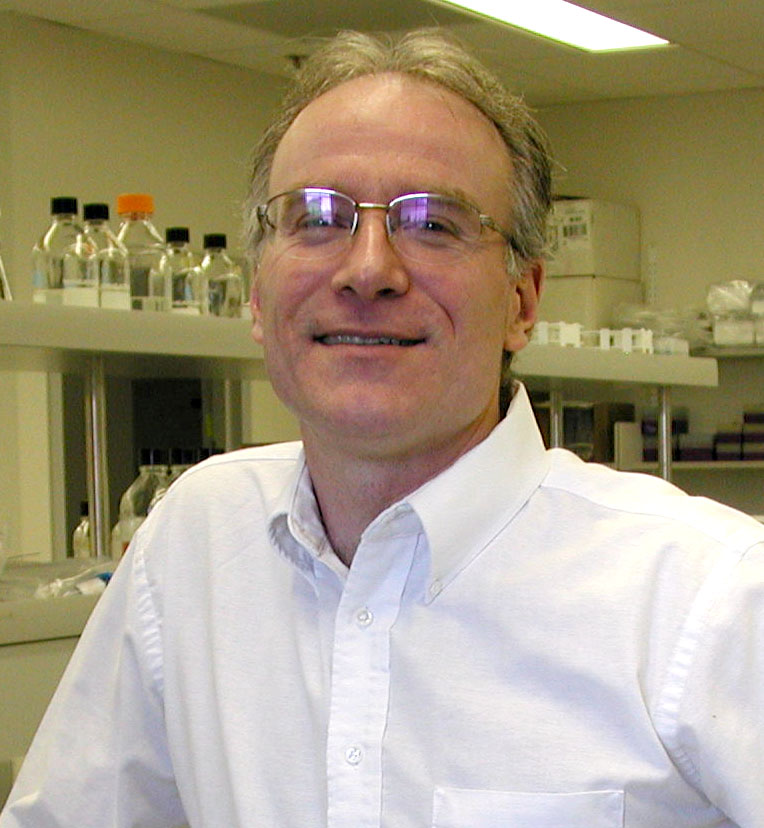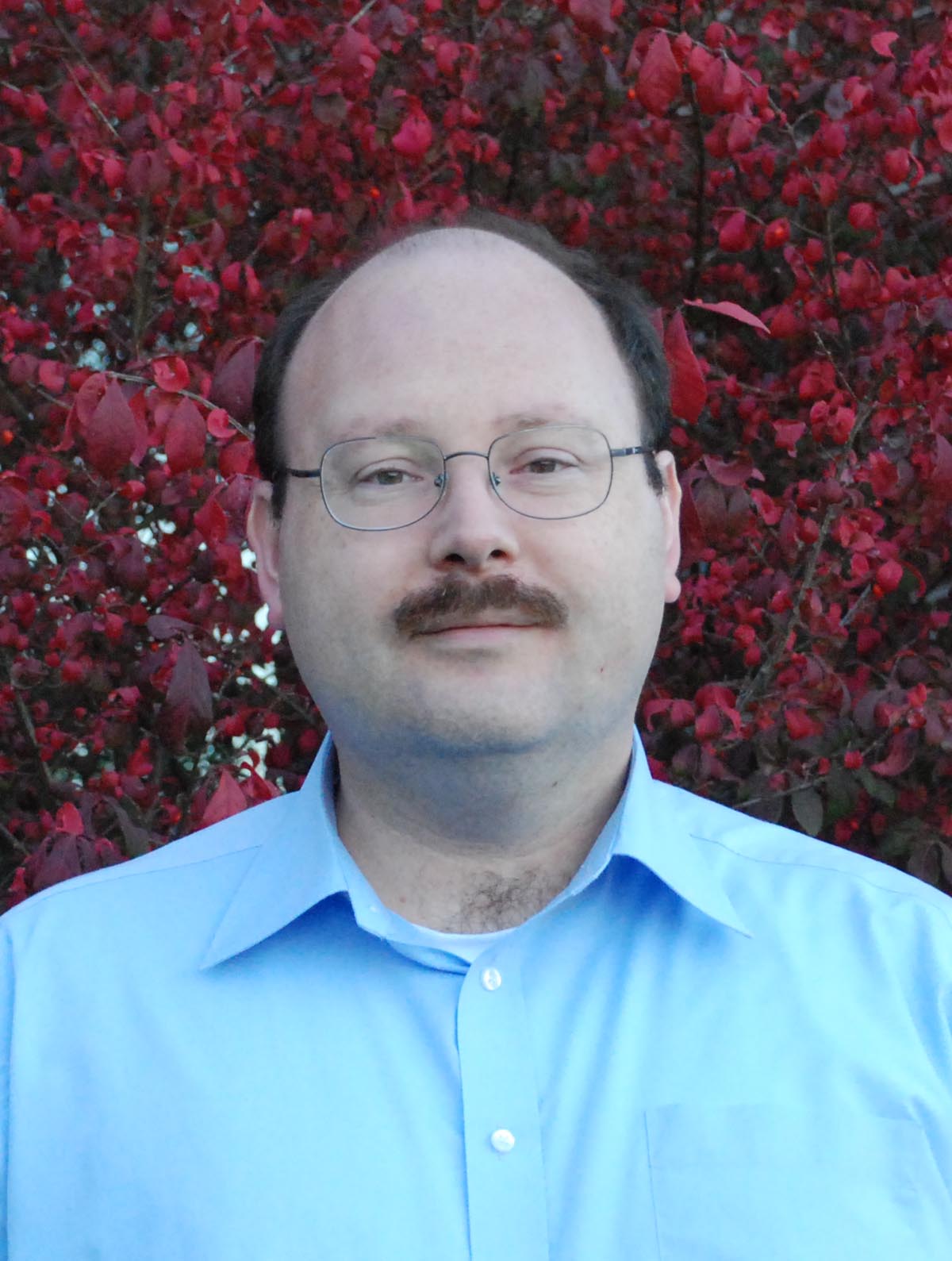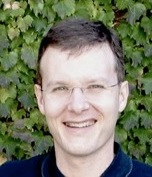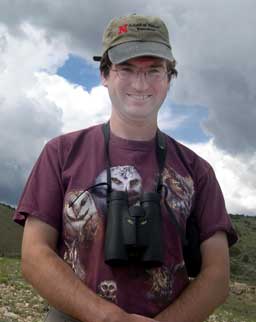
Emerging Frontiers in Integrative Biology
Speaker Bios

Dr. Andrew Benson
is the W. W. Marshall Professor of Biotechnology and the Director of Core of Applied Genomics and Ecology. His current research focuses on the study of gut microbiome, and specifically, host genetic factors that shape the establishment and composition of this complex ecosystem. His work incorporates Next Generation sequencing technologies as a set of high-throughput methodologies for measuring species composition of gut microorganisms. Dr. Benson collaborates with quantitative geneticists, genomicists, bioinformaticians and statisticians to integrate the gut microbiome as a quantitative trait in large-scale genetic association studies in animal models with the ultimate goal of understanding the genetic architecture underlying predisposition to complex lifestyle diseases.CV

Dr. Paul Black
is Chair of the Department of Biochemistry and the Director of Center for Biological Chemistry at UNL. Dr. Black's research is directed to determine the components and mechanisms governing fatty acid transport across biological membranes and how these events are liked to downstream fatty acid trafficking and metabolism. Of particular interest are the multiple isoforms of the fatty acid transport proteins and the fatty acyl CoA synthetases. In addition to his research at UNL, Dr. Black serves as an Adjunct Professor of Biochemistry at the Center for Cardiovascular Sciences at Albany Medical College.CV

Ian Cottingham
is the Director of the Computing Innovation Group in the Department of Computer Science and Engineering (CSE) at the University of Nebraska – Lincoln. The Computing Innovation Group (CIG) provides industry-level software support for funded intradisciplinary research projects. Mr. Cottingham has directed operations of CIG since its formation in 2009, prior to which he served as Chief Software Architect in the Laboratory for Advanced Research Computing. In these capacities he has been involved in an ongoing partnership with the United States Department of Agriculture Risk Management Agency to develop tools for agriculture producers and researchers to study and quantify the effects of climate risk events, specifically drought. In conjunction with CSE researchers and partners from the National Drought Mitigation Center this work has resulted in over $10 million in funding across 6 years. Mr. Cottingham has also served as a software development lead in IBM Global Services, President of OrangePeel inc., and Chairman and CEO of Red Brain Games inc. He continues to focus on business driven computing research and the commercialization of research-oriented intellectual property. He currently oversees the development of The Bioinfinity Project, an advanced web framework for the integration and delivery of a unified biodiversity and genomic dataset. Mr. Cottingham is pursuing a PhD in computer science with a focus on data modeling and data-driven software architecture.CV

Dr. Michael Fromm
received his Ph.D. in molecular biology from Stanford University and has held research positions at the US Department of Agriculture, Monsanto, and Mendel Biotechnology. He is currently a Professor in Agronomy and Director of the Center for Biotechnology at the University of Nebraska, Lincoln. His current research is in the area of how dietary molecules can affect cell signaling pathways to improve human health. Specifically, his research is on understanding the signaling pathways activated by conjugated linoleic acid, a fatty acid that causes dramatic fat loss in adipocytes.CV
Dr. Lawrence Harshman
is Professor in the School of Biological Sciences. In addition to his research and teaching activities, Dr. Harshman serves as the Associate Editor of Genetics journal.CV

Dr. Jean-Jack M. Riethoven
is the Manager of the Bioinformatics Core Research Facility at UNL Beadle Center. He received his doctoral degree from Leiden University and possesses more than fifteen years experience in the field of bioinformatics and computational biology. Dr. Riethoven focuses on development of large parallel computational pipelines, biological databases, microarray analysis and high throughput sequencing analysis (e.g. Solexa). He has recently worked on creating computational pipelines as part of the analysis of data resulting from high throughput sequencing efforts in Arabidopsis thaliana (ChIP-Seq on histone modifications), Chlorella NC64a/PBCV1, and Mus musculus.CV

Dr. David Swanson
received his Ph.D. as a computational chemist at UNL, after which he continued modeling organic monolayers and molecular solids as an NSF-NATO Fellow at the Technical University of Wroclaw (Poland). He was next an NRC Research Fellow at the Naval Research Laboratory in Washington, DC. He then returned to UNL where he is now Director of the Holland Computing Center, which provides supercomputing resources to researchers throughout the University of Nebraska system.CV

Dr. Andrew Tyre
started out studying insect behavior as an undergraduate at University of Alberta and later received an MSc at Simon Fraser University in Behavioural Ecology. His doctorate at the University of Adelaide, Australia, focused on computer models of population dynamics. Now he works on using ecological theory to help managers make better environmental decisions - working across a broad interdisciplinary interface between mathematics, ecology and the human dimensions of conservation biology.CV

Dr. Dave Wedin
is professor in plant and ecosystem ecology at the School of Natural Resources. His research interests include grassland and savanna ecology, carbon and nitrogen cycling in terrestrial ecosystems, biodiversity and ecosystem functioning, landscape ecology and fire ecology. They also include nitrogen-use-efficiency and resource allocation in plants and stable isotope studies of plant-soil feedbacks.Current research projects in Nebraska include the Sandhills Biocomplexity Project, subtitled “Spatiotemporal coupling of ecological and geological dynamics in the Nebraska Sandhills” and the ecosystem consequences of ponderosa pine establishment in the Nebraska Sandhills at the planted Nebraska National Forest at Halsey.
In the biocomplexity project that Dave co-led with two other researchers, 15 total co-investigators from diverse disciplines used a $1.8 million grant from the National Science Foundation take an integrated approach to studying the dynamics of the Nebraska Sandhills from the last few thousand years to today, particularly the interactions of water, dunes and vegetation as the grass cover is stripped or recovers. The Sandhills are a model system for biocomplexity studies, in particular studies that integrate the perspectives of ecologists and geologists to understand how ecological interactions, geomorphology (landscape structure and development) and climate interact to shape a landscape.
CV
Dr. Yuannan Xia
is the Manager of the Genomics Core Research Facility at the University of Nebraska, Lincoln. He received his Ph.D in Biological sciences from UNL, focused on Chlorella virus induced restriction-modifucation system. He has held a research position in molecular biology at Restoragen, Inc. His current research interests are studies of gene expression, regulation at genomic level by using Affymetrix GeneChip DNA microarray and Illumina/Solexa NextGen sequencing. Dr. Xia has collaborated with several UNL and Nebraska research labs and private biotech companies in studies of many areas such as Arabidopsis epgenetics, mouse nutragenomics, wheat breading, swine breeding, breast cancer, and ethanol production.CV

